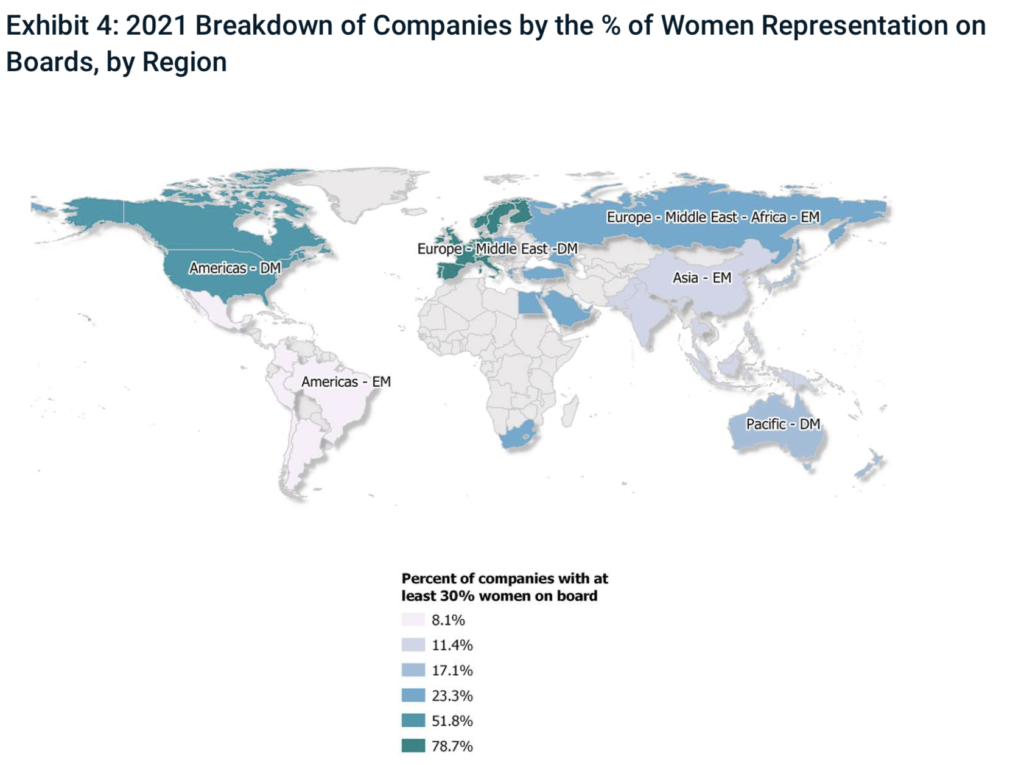In the past two years companies’ board composition has presented mixed signals concerning gender diversity progress. Although women representation at the board level has improved, the rate of change has varied year over year. In 2019, 20.0% of board seats of the constituents of the MSCI ACWI Index were held by women, a noteworthy increase of 2.1 percentage points in comparison to 2018. However, this annual rate of increase was reduced to 1.1 percentage point in 2020, thus indicating a slowdown in this trend. In 2021, the number of board seats held by women went up 1.6 percentage points, a moderate improvement despite the ongoing COVID-19 pandemic and its threat to undo gender diversity progress. Similar results were identified among constituents of the MSCI World Index, including those domiciled in the U.S. But while this data indicates an overall tendency towards more gender-balanced boards, the year-over-year oscillation begs the question of how committed companies are to reaching and maintaining at least 30% women representation at board level, and eventually full gender parity, in a timely manner.
The incremental increase in directorships held by women has also been accompanied by an overall decline in the number of companies without any women representation on boards. In 2021, 14.2% of the constituents of the MSCI ACWI Index had all-male boards, down from 17.0% in 2020, and from 18.6% in 2019. Once again, such decline was mostly driven by companies domiciled in emerging markets, which saw a decrease of 4.6 percentage points in the percentage of companies without any women directors. In aggregate, however, emerging market companies still lag their developed market peers both in terms of the overall number of director seats held by women as well as the number of companies without any women directors. As of October 29, 2021, 26.4% of the constituents of the MSCI Emerging Markets Index (MSCI EM Index) still had all-male boards

Source: MSCI ESG Research LLC, November 2021

Source: MSCI ESG Research LLC, November 2021
In 2021, 51.6% of the constituents of the MSCI Word Index, many of which were subject to mandatory gender quotas, had reached a critical mass of at least 30% women representation at board level, up from 44.8% in 2020. By comparison, only 12.0% of the constituents of the MSCI EM Index had reached the same level of board gender diversity, up from 9.2% in 2020.
Among developed markets, European countries had the highest percentage of companies with at least 30% women directors (78.7%). In addition, only 0.9% of the companies had all-male boards.


Source: MSCI ESG Research, November 2021

